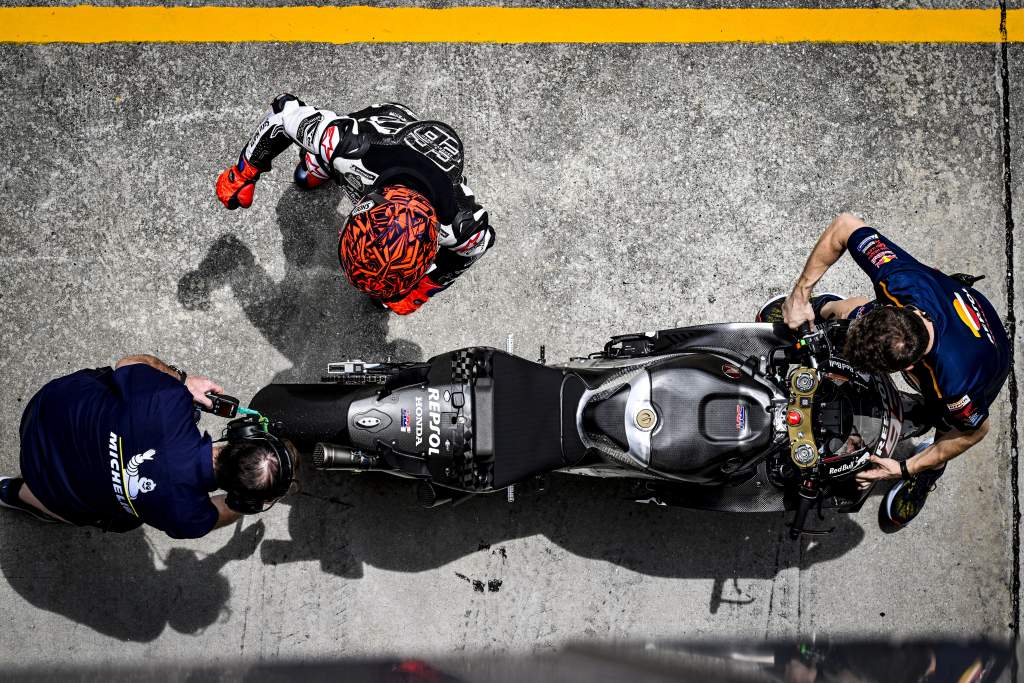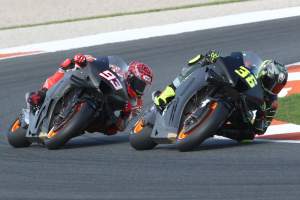Ahead of the final winter test this weekend, The Race MotoGP Podcast answers listeners’ questions about the 2023 season’s prospects – and much more.
Yamaha’s potential this year and beyond, and whether it risks a downward spiral with dire consequences, a particular Ducati satellite rider who might be of interest to other teams (and no, it’s not Jorge Martin) and MotoGP’s approach to TV deals and its own streaming package are among the topics you raised for Simon Patterson, Valentin Khorounzhiy and Matt Beer to tackle.
Inevitably we (and you) stray a little beyond 2023 topics too: Brno’s fate and how Valentino Rossi would’ve fared at Ducati had he gone there when Jorge Lorenzo did are discussed, and Sepang 2015 crops up again too.
Listen on Apple Podcasts
Listen on Spotify
Todd from Dallas’s MotoGP penalty suggestion
Listener Todd from Dallas didn’t just send in a question, he sent in a whole proposal for a restructuring of MotoGP’s penalty and stewarding system!
As promised on the podcast, we’ve put his full proposal on this page so you can see what we’re discussing when we come to his question. Thanks to Todd – and all the other listeners who sent in questions – for participating.
PROPOSAL: MOTOGP CRITERIA FOR EVALUATING ON-TRACK INCIDENTS AND RIDER PENALTY SYSTEM
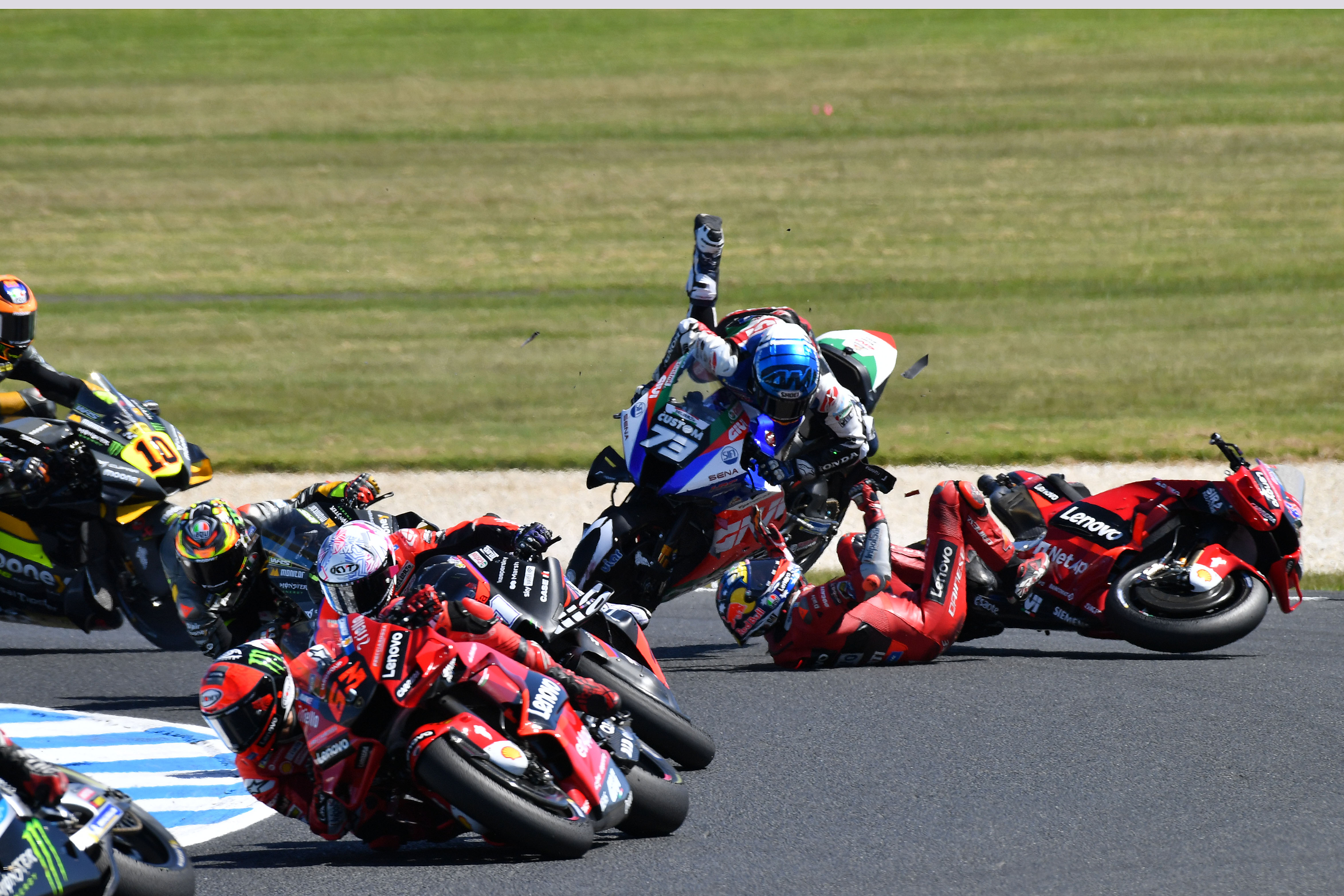
PROCESS FOR FORMULATING CRITERIA FOR ON-TRACK INCIDENTS AND RIDER PENALTY SYSTEM
1. Formulate a draft criteria for evaluating on-track incidents and a system of rider penalties. (See possible draft criteria and penalty system below.)
2. Select 3 stewards. (This could be done solely by Dorna or with input from the paddock.) The stewards should be qualified and capable of evaluating on-track incidents and objectively applying the criteria to such incidents in a consistent manner.
3. As training, the stewards should review several past racing seasons of all classes, including practice, qualifying, and races.
4. For each incident identified during this training review, the stewards should apply the draft criteria and produce a written, reasoned decision, which includes findings of fact and application of the criteria to those facts for each incident.
5. Make changes to the criteria as needed based on issues discovered during the training review process.
6. Repeat steps 1 through 4 until a workable criteria and penalty assessment system has been formulated.
7. Publish the criteria and the training decisions to the paddock and provide a period for written comments by the paddock members. A meeting to discuss feedback on the criteria could also be held.
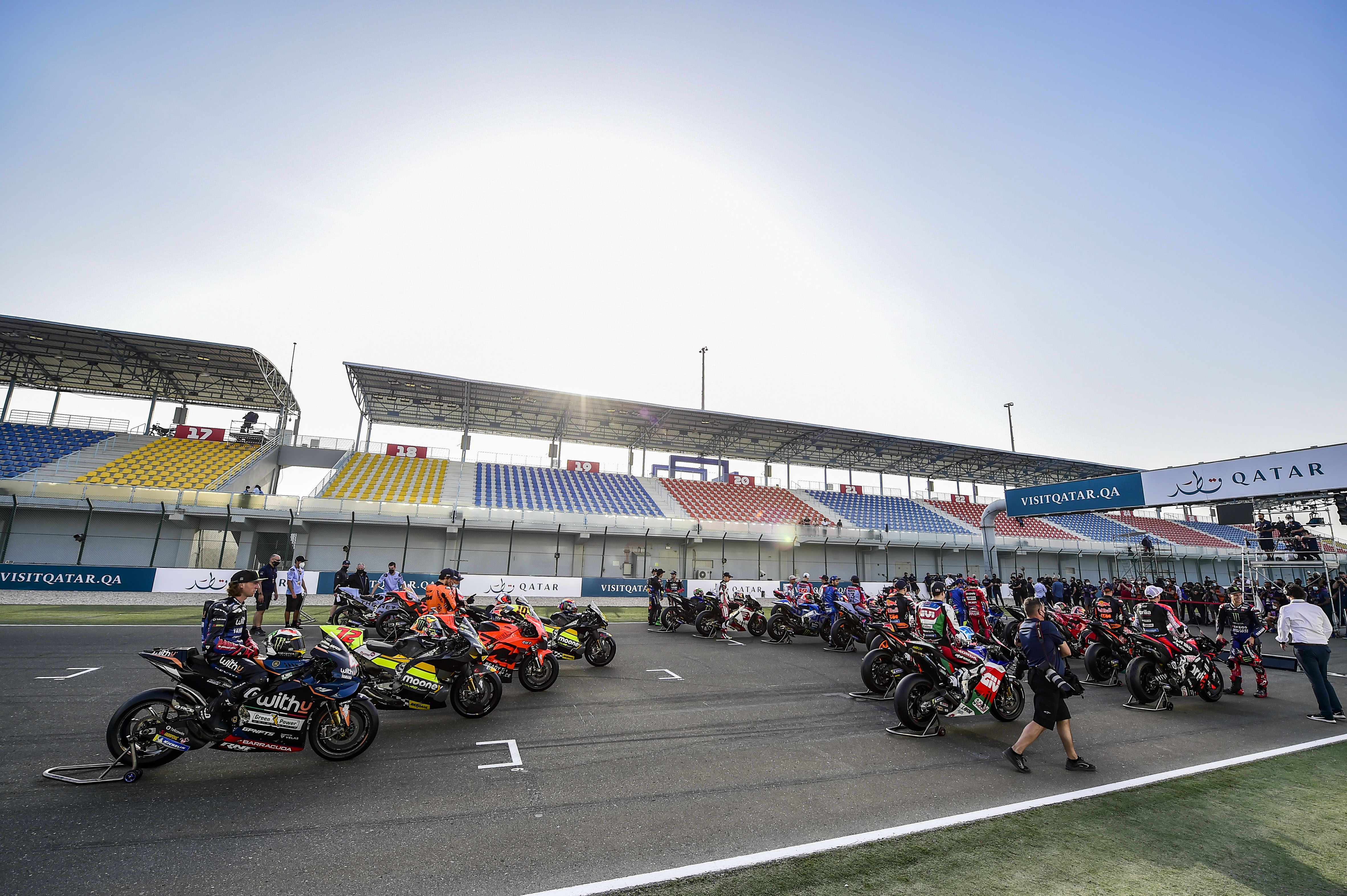
8. Issue a written response to all comments and make any needed changes to the criteria and penalty system.
9. Additional review of past seasons with reasoned training decisions may be needed to further test and refine the criteria if changes were made based on paddock comments and feedback.
10. Finalise the criteria and penalty system for the season. No changes will be made to the system during the race season.
DRAFT CRITERIA FOR EVALUATING ON-TRACK INCIDENTS AND RIDER PENALTY SYSTEM
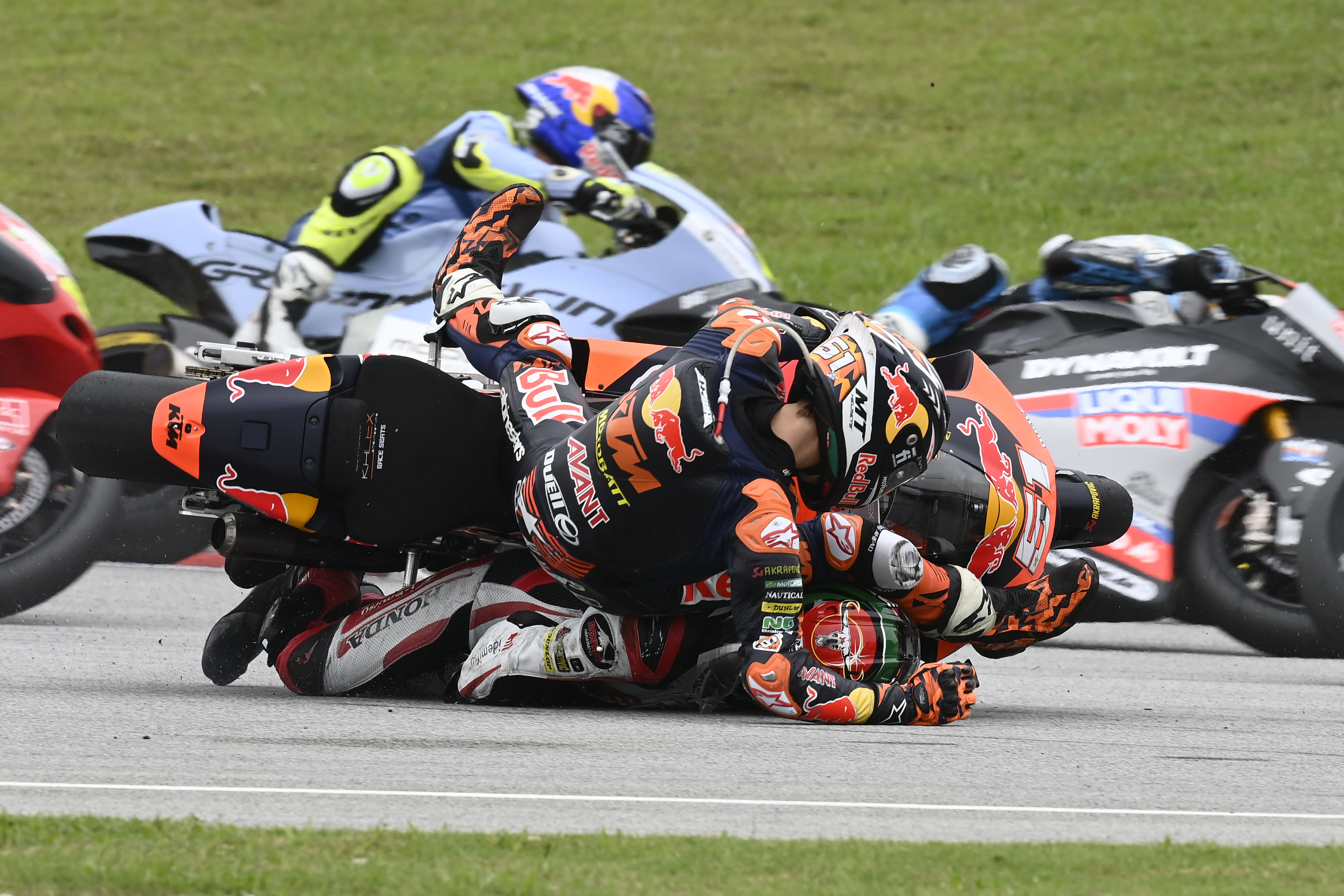
CRITERIA FOR EVALUATING ON-TRACK INCIDENTS
1. Surrounding circumstances. Under the circumstances, was the situation in which the rider was entering dangerous or questionable such that the rider could not have reasonably expected to complete the move safely? (Eg, Was there enough space to safely make the overtake? Could they see the other rider(s) involved in the incident?) If so, then 1 point.
This is meant to examine the safety of the situation the rider chose to enter or the safety of the circumstances in which the rider was choosing to take their action. What did the rider know or what should they have known about the situation or circumstances in which they were acting?
2. Rider(s) conduct. Under the circumstances, was the rider riding dangerously or recklessly when entering the situation? (Eg riding too fast or out of control under the circumstances?) If so, then 1 point.
Based on the above circumstances, what was the rider(s) conducting when entering those circumstances? A rider could enter a situation that was not safe but do so while under control. Conversely, to compound matters, they could enter an unsafe situation and do so when not under control or at an unreasonable speed under the circumstances.
3. Other rider(s) conduct. Could other riders involved see this rider? If so, did the other rider(s) respond as one would reasonably expect under similar circumstances? If so, then 1 point.
This is meant to take into account when another rider, in response to the initial actions of the rider under investigation, may have made an incident worse. But if the other rider(s) actions in response were reasonable under the circumstances, such that there is nothing they could or should have done to avoid or lessen the significance of the incident, then an additional point is assessed.
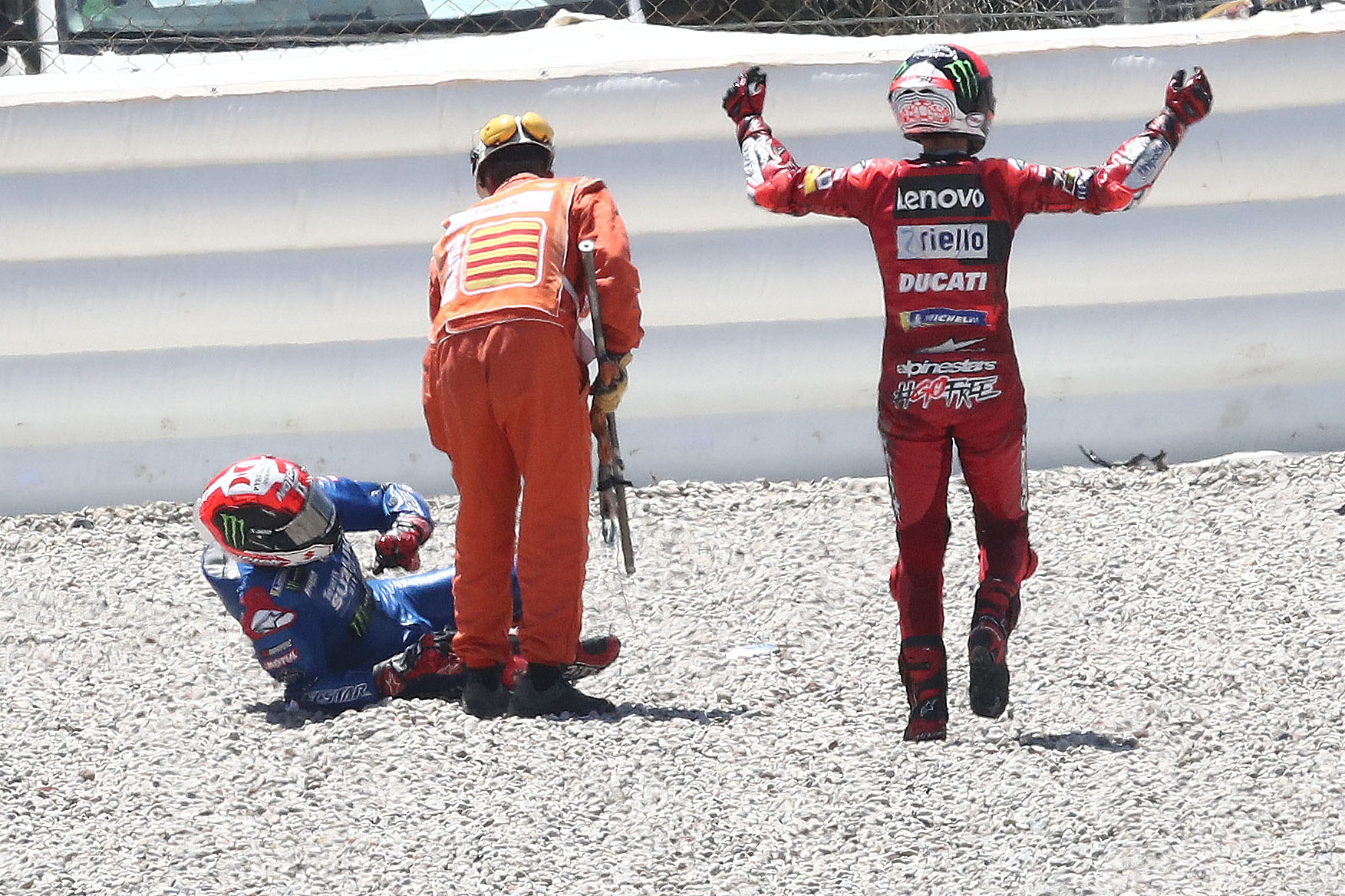
4. Effect on other riders. Did the rider(s) actions adversely affect another rider?
a. If the other rider was significantly disrupted (eg forced to run wide), then 1 point.
b. If the other rider was knocked out of the race, then 2 points.
c. If multiple additional riders were adversely affected, then use the greater of the two penalties above and add an additional 1 point. (ie, not 1 point per additional rider.)
d. Thus, if multiple other riders were adversely affected, then the maximum additional penalty would be 3 points, regardless of the number of riders involved.
The criteria assesses points against a rider, even if others are not impacted. But additional points are assessed if other riders are adversely affected.
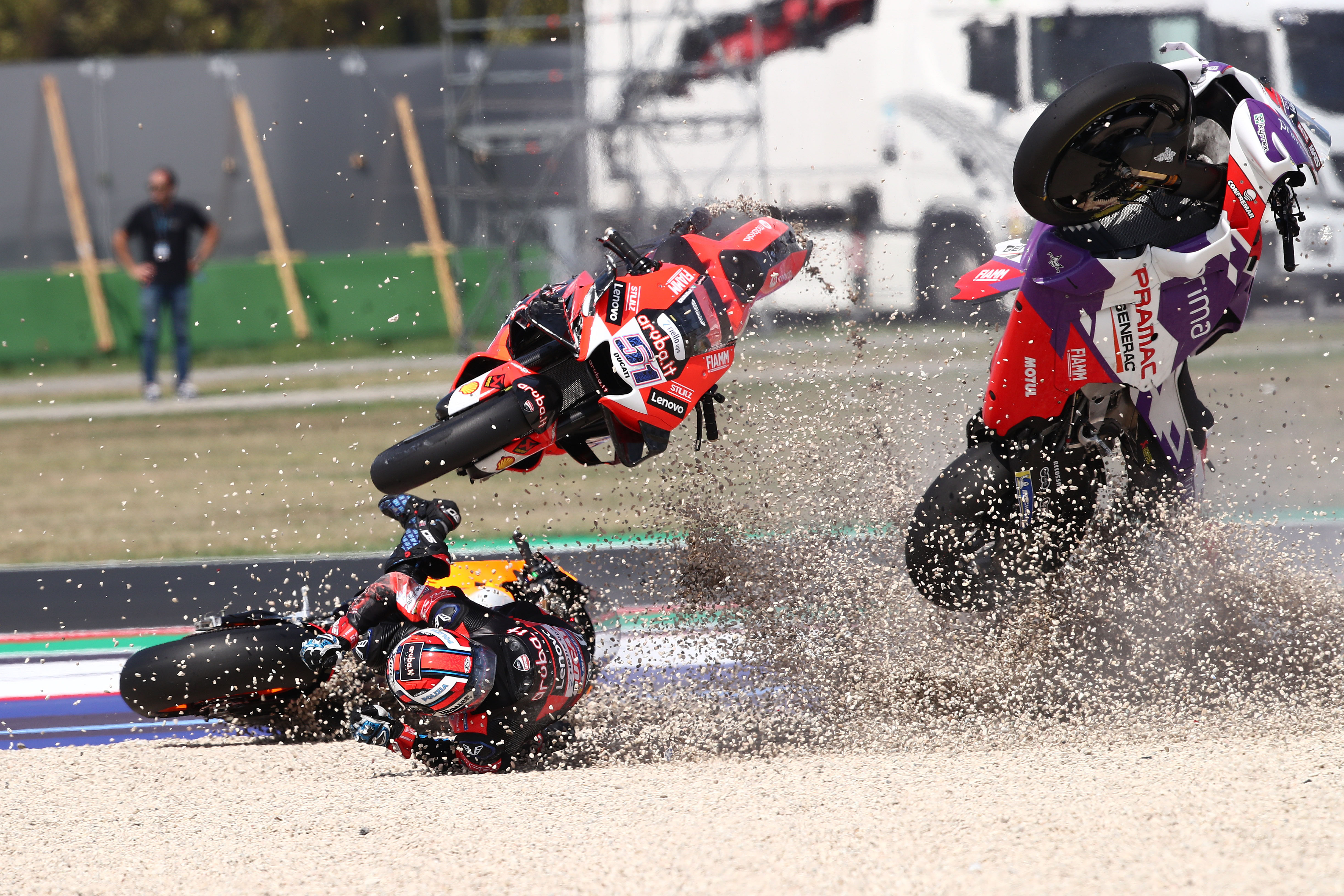
5. Other relevant circumstances. Are there any other relevant factors to consider? (Eg, beginning of the race with close packs of riders and cold tyres, which requires additional caution, a last-lap battle where taking additional risk might be reasonable).
This should be factored into question no.1, which requires consideration of the surrounding circumstances at the time of the incident. But if there are other, broader but relevant circumstances not otherwise considered, then they may also be examined. Such additional circumstances may be mitigating or aggravating factors.
The maximum Single Incident Score would be 6 points.
PENALTIES FOR ON-TRACK INCIDENTS
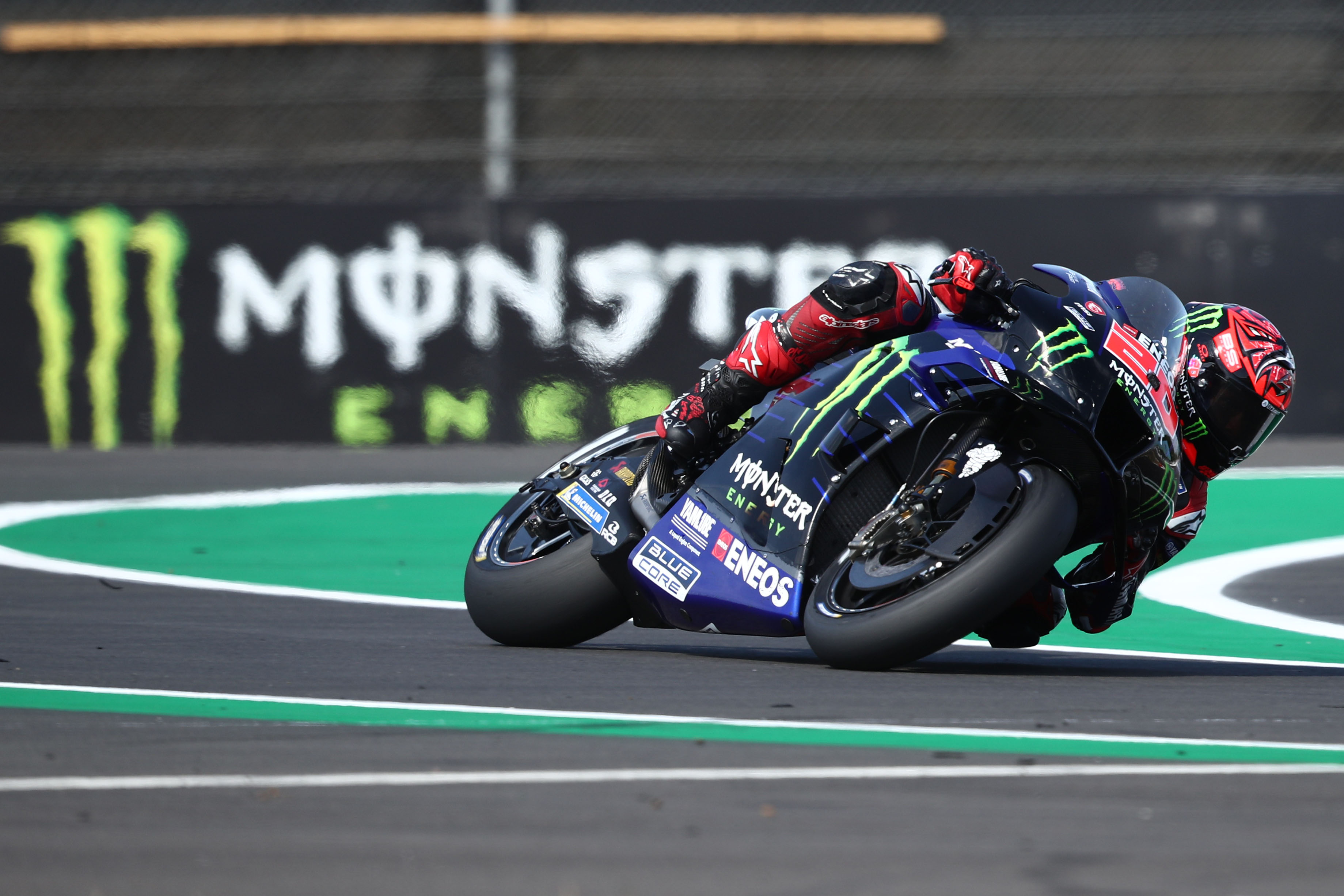
Each incident yields a Single Incident Score. Single Incident Scores are cumulative over a rolling 12-month period for a Total Incident Score. So penalties from the prior race season will carry over to the next if they are within the 12-month rolling period. The following penalties are applied based on a rider’s current Total Incident Score:
1 point: Warning
2 points: Long-lap penalty
3 points: Long-lap penalty
4 points: Ride-through penalty
5 points: Start from the back of the grid
6 points: Pitlane start
7 points: 1 race suspension
For example, if a rider begins with a Total Incident Score of 0 and is assessed a 2-point Single Incident Score at Valencia in November 2023, then their Total Incident Score is 2, and they receive a long-lap penalty. If they are assessed another Single Incident Score of 2 points at Portimao in April 2024, then their Total Incident Score is now 4, and they will receive a ride-through penalty. If they are assessed a 1-point Single Incident Score at Mugello, then their Total Incident Score is 5 points, and they must start from the back of the grid at the next race.
PROCESS FOR APPLYING PENALTIES
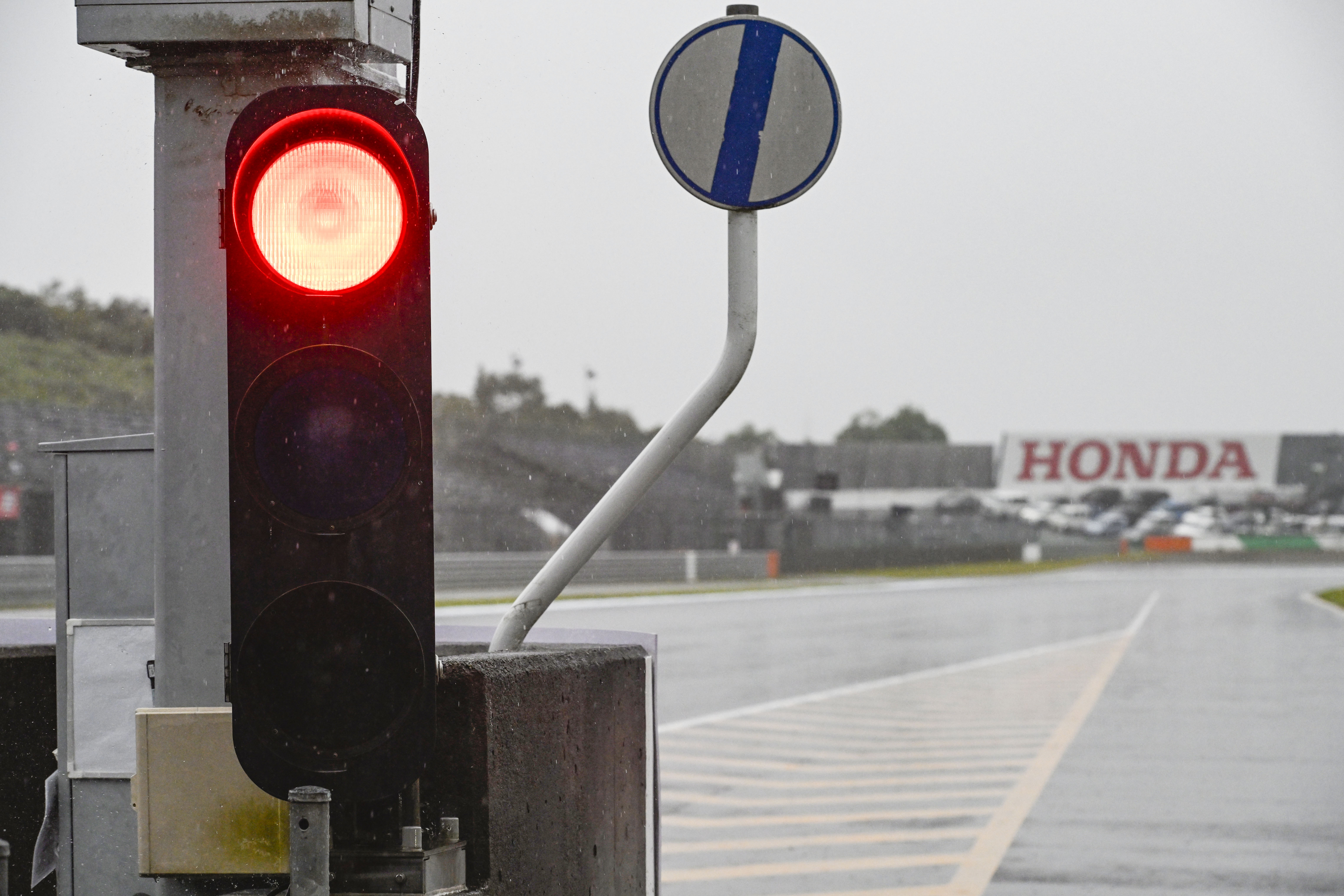
There will be 3 stewards, one of which will be chief steward. (Alternatively, there could be a total of 9 stewards, with a panel of 3 stewards overseeing each race weekend. Each 3-steward panel would still include one Chief Steward for that weekend. Thus, the makeup of the steward panel would change weekend to weekend. Something similar is done with officiating crews in various sports).
The Criteria is applied during the season to any on-track incident that the stewards determine warrants review. If at least 2 stewards agree on the penalty, then that is the decision of the stewards for that incident. If at least 2 stewards cannot agree on the penalty, then the decision of the chief steward is the decision of the stewards for that incident.
Penalties assessed under the Criteria will be issued and served during the race when possible; otherwise, the penalty is assessed after the race and served during the next race. Penalties assessed after the final race of the season for on-track incidents occurring during the final race will be served during the first race of the next season, even if the rider has changed classes. All penalties assessed during practice, qualifying, and sprint-race sessions will be served during the full race. Regardless, after the incident, the stewards will prepare a written, reasoned decision that includes findings of fact, application of the criteria to those facts, the resultant Single Incident Score as per the Criteria, the resultant Combined Incident Score for that rider, and the resultant penalty. (This should be typically accomplished in one page.)
All written decisions of the stewards are maintained by Dorna for the stewards to refer to for guidance and consistency. Members of the paddock may also access and review past written decisions.
The Criteria and Penalty System will be reviewed each year during the off-season. Stewards are required to study past written decisions to help maintain consistency over subsequent seasons, especially as stewards change.



